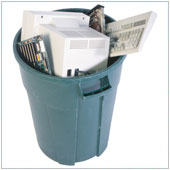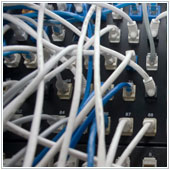 He who dies with the most toys wins right? While it may be great to have a multitude of devices and certainly makes our lives easier, it does create a fair amount of waste when we decide to get rid of something. Some people may be tempted to simply throw their old electronic devices into the trash and be done with them. However, this actually harms the environment and is not generally advised.
He who dies with the most toys wins right? While it may be great to have a multitude of devices and certainly makes our lives easier, it does create a fair amount of waste when we decide to get rid of something. Some people may be tempted to simply throw their old electronic devices into the trash and be done with them. However, this actually harms the environment and is not generally advised.
Here’s how you can safely dispose of your old electronics:
Disposal points E-waste is becoming a large problem, disposing of it safely is a bigger one. In the West, many big-box stores and retailers have programs where you can drop off your old gadgets, often receiving store credit in return. Many municipalities are also doing their part and have set up e-waste collection points. The vast majority of these devices are broken down, with usable and valuable parts salvaged and sold back to manufacturers.
If the devices still work, some stores may even repair/upgrade them and resell them. Others will be shipped to China or Africa, where the parts are often saved or passed onto those who are in need. It’s a good idea to consult with your local government authority to see what they do with devices, and prepare accordingly. Most of the time, it’s as simple as bringing the device, with no cables or batteries attached, to the collection center, putting it on a counter and walking away.
If your local collection point ships products overseas for disposal, you should ensure that any and all electrical equipment is disabled. This means pulling wires from connection points, and removing batteries from phones. The reason for this is because many products are shipped and stored in compacted cubes, often within close proximity of static conducting elements. Given the right conditions, this could start an electrical fire that’s nearly impossible to contain.
Before you do this however, there are a few things you can do:
Computers When disposing of old computers, you should ensure to wipe all data on the hard drives. If you don’t, you might be surprised at how easy it is to access hard drives. Often, all it takes is a program downloaded from the Internet, a few mouse clicks, a line of code and ‘bam’, access granted.
The best thing to do is use a utility program like Eraser for Windows and the included Disk Utility for Mac. Some people go so far as taking the hard drive and RAM out of the computer and physically smashing it, or wiping a magnet over it. It should be noted that simply hitting the drive with a hammer or exposing it to magnetism may not destroy all the data. To do so, you’ll need to open the hard drive’s case by taking the screws off, yell, ‘Hulk smash’, while smashing the plates inside and then wave a magnet over it.
Phones Phones are a little easier to dispose of. First transfer all important information and remove any added memory cards. Next, do a full Factory Reset and pick the option to wipe all data. Finally, remove the battery and you should be good to go.
Office equipment If you’re disposing of external hard drives, you can basically do the same things as you would with the hard drive in your computer - wipe, smash and magnetize. For office equipment like printers and faxes, it can be a bit harder. Most manufacturers will tell you to remove all ink cartridges and paper and may have a way to wipe any flash memory on the device. It’s best to contact the manufacturer before you try anything though.
In general, it’s a good idea to contact a professional like us before disposing of office equipment, as we may have a better way to do so, or be able to take devices off your hands. Next time you have to get rid of some electronics, contact us.

 Take a look at any product or building based on Bauhaus design. It’s clean, modern looking with a touch of simplicity that just looks right. Now, take a look at the cables connected to your computer or servers. They probably resemble something closer to a free-form, throw paint on the canvas type of art. While this may not seem like a big deal, it’s important to have organized cables.
Take a look at any product or building based on Bauhaus design. It’s clean, modern looking with a touch of simplicity that just looks right. Now, take a look at the cables connected to your computer or servers. They probably resemble something closer to a free-form, throw paint on the canvas type of art. While this may not seem like a big deal, it’s important to have organized cables.
